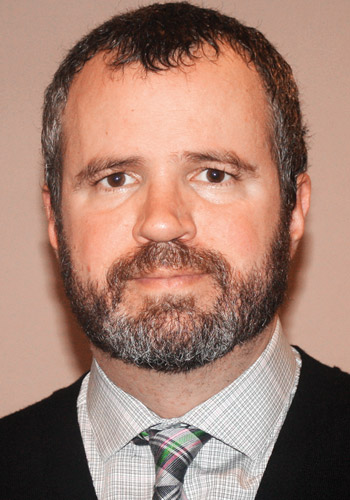

This is my sixth year writing the guide, and through the years I’ve been able to write other HCV- and harm reduction-related articles in other issues. Taken together, it is my hope that we address many of the issues that are important to people living with or at risk for viral hepatitis. In this year’s guide, we’re going back to basics. With pages devoted to a basic overview of hepatitis A, B, and C, as well as other related topics like HIV/HCV co-infection, and an overview of the liver to go along with the individual drug pages, we hope to provide you with a useful resource.
Looking back, it is remarkable to think how far we’ve come in HCV drug development and how fast it has happened. In fact, the World Health Organization has set the year 2030 as a goal to eliminate viral hepatitis! Imagine a world without hepatitis C and B. We can get there!
There are many hurdles to overcome, but the tools to get us there exist and we need to build the political commitment to put them in action. Here are just three things we can do to push the agenda to make hepatitis C and B a thing of the past.
Remove all restrictions on HCV treatment access. This is a no-brainer: We can’t eliminate HCV if we don’t treat everyone. In the United States, access is getting better, but some private insurance plans and state Medicaid programs continue to put up barriers to HCV cure and treatment. Denying HCV treatment because a person’s liver damage is not advanced enough or because of substance use is bad policy for individual health, leading to greater suffering. It’s also bad public health since the more people we cure, the less likely hepatitis will be transmitted to others. And it is just morally and ethically wrong to deny a person a cure. Check out stateofhepc.org for an overview of state Medicaid restrictions and see what grade your state gets!
Support and expand syringe access and other harm reduction services, including MAT. In addition to treating everyone for HCV, we also need to expand access to sterile syringes and other injecting equipment, as well as other harm reduction services such as overdose prevention and access to medication assisted therapy (MAT). In an ideal world, we’d have a network of syringe service programs always within reach; in an even dreamier world, we’d have them with safe consumption spaces. Additionally, improving access to MAT—medications like methadone, buprenorphine, and naltrexone—is proven intervention to treat and manage opioid addiction. Research has also shown us that MAT can also reduce new HCV infections, and is even more effective when combined with syringe service programs and HCV treatment for people who inject drugs. Check out amfAR’s Opioids and Health Indicator Database for more information: opioid.amfar.org.
Push for an HBV cure. We can treat HBV—and we cover the treatments in this issue—but to date, there is still no cure for it. There is lots of research and development going on right now, with approximately 50 HBV potential cures under investigation, but we need to make sure there is enough funding and support to do this essential work. Follow the work of HBV organizations such as The Hepatitis B Foundation for advocacy alerts and policy sign-on letters, and cure research news: hepb.org.
And most importantly: Listen to people living with HCV and HBV. This is another no-brainer, and it is one that we must do if we want to adequately address viral hepatitis and effectively meet the needs of people living with HCV and/or HBV. Indeed, most of the best advocates for these two diseases are people who have been cured of the disease or those who are still living with it. Their lived experience makes them the experts! It is challenging to build a movement of health advocates and activists. We’ve long had great organizations doing the work, but bringing in the patient voice has been difficult for a variety of reasons. In July 2019, the National Viral Hepatitis Roundtable (NVHR) is organizing the first of its kind NVHR Patient Summit—100 people living with (or cured from) HCV will come together in Atlanta for two days to learn more about HCV, advocacy tools and strategies, and to build a network of advocates. Check out nvhr.org for more information.
There’s work to do, but we can see a world without viral hepatitis on the horizon.

